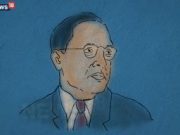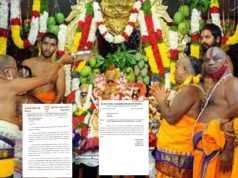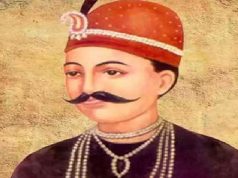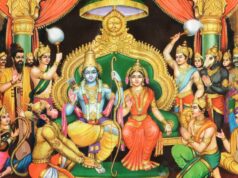The Bharatiya Janata Party’s (BJP) spectacular victory in Uttar Pradesh (UP) and its impressive performance in three other states has stunned commentators and psephologists alike. The eventual outcome in this unforgettable electoral battle was nowhere near what most political pundits were churning out as considered analysis or what pollsters were predicting in their pre-poll surveys and even exit polls. It seemed as if mainstream media –both print and television – had lost the capacity to step back and dispassionately view the electoral drama as it unfolded.
One of the prime reasons for this is the deep-seated prejudice and even hatred for the Prime Minister, Mr. Narendra Modi and the BJP among commentators and the unwillingness to go beyond the moth-eaten script that sees everything through the prism of so-called secularism and Hindu communalism. As per this narrative, largely pushed by Nehruvians and their Marxist friends, the Nehruvians are the good guys in Indian politics; the Marxists, who ride piggyback on the Nehruvians are also, by association, good guys. Those who have a nationalist bent of mind are the bad guys and those who represent regional political forces are to be tolerated and manipulated whenever necessary. The Nehruvian and Marxist schools have permeated the media, specially the English media, the academia and the bureaucracy over the last seventy years and ensured that much of the discourse is along the lines scripted by them. Therefore, it is fashionable to be Nehruvian or left-leaning. Those who do not conform to these two schools are to be treated as pariahs and generally kept away from the upper echelons of the editorial departments.
Coming back to UP – 2017, since the media, dominated by these two schools, view everything through this prism, they were unwilling to go beyond this template of the electoral battle being a Maha Yuddh between “secular” forces and Hindu Communalists! As the results show, they went horribly wrong because the people did not perceive their so-called secular parties as “secular”; nor did they perceive Mr. Modi and his party as a bunch of Hindu communalists! In reality, it was a battle between retrograde forces like the Congress Party, the Samajwadi Party (SP) and Bahujan Samaj Party (BSP) – who were bombarding the people with divisive, decrepit slogans of an old India – and Prime Minister Modi, who was offering the youth and the aspirational classes a new India in which the mool mantra would be fairness and everyone would have equal opportunity.
This media also got it completely wrong when it came to demonetisation. Although the poorest of the poor, who stood in long queues for hours, backed Mr. Modi to the hilt on this, influential sections of the media never saw this. It also did not see that Mr. Modi had through his fair and honest implementation of policies like Ujjwala (providing cooking gas connections free to women from Below Poverty Line (BPL) households), the Jan Dhan Yojana and the low-premium insurance scheme for the poor, had over the last two years, quietly entered the hearts and hearths of the poor across the land. It is here that one can draw a comparison between him and Indira Gandhi. She too caught the imagination of the poor and spoke ad nauseum about banishing poverty (Garibi Hatao) , but had no plan to execute it. The comparison must end here, because Mr. Modi’s ability to execute his ideas is of a different level altogether. While Mrs Gandhi nationalized banks and squandered public money on bogus loan melas in which the beneficiaries were often Congress workers, Mr.Modi got a mind-boggling 250 million poor citizens to open bank accounts.
The media also lost track of the fact that Mr. Modi never played the communal card in this election. He only spoke of development policies that would embrace everyone, cutting across caste, creed, gender, region and religion. Since the media is used to a staple diet of communal or caste conflict in electoral politics, it refused to believe that the prime minister was seeking votes on the most secular agenda of them all – ‘development’! In any case, the media believed that development is not “sexy” enough to garner votes! Mr. Modi referred to this when he addressed a gathering in the party headquarters that the media had failed to take note of the fact that the BJP had registered such a massive victory purely on a development agenda.
Mr. Modi also rose to new heights of statesmanship when he told the party after the results that “Sarkar bantee hain bahumath se, lekin chaltee hai sarva math se; Sarkar sab ke hothe hain -“Jinhone Vote Diya, Unke bhee hain; Jinhone vote nahee diyaa, Unke bhee hain” (Governments are formed on the basis of the opinion of the majority; but they run with the blessings of everyone. The government belongs to everyone – it belongs to those who voted for us, and it also belongs to those who did not vote for us”. Have you ever heard a national leader before Mr. Modi draw such a profound distinction between electoral politics and governance?
There are several messages emanating from Uttar Pradesh, Uttarakhand and Manipur and from Orissa and Maharashtra, which witnessed panchayat and municipal elections recently. It is now obvious that the people see Mr. Modi as a decisive leader who can take tough decisions and re-build a strong and united India. They are worried about the fissiparous tendencies that are growing in the country and the overt and covert support that the Congress Party and left-leaning elements in our polity are lending to those who are trying to weaken the unity and integrity of India. The strange developments in university campuses in New Delhi and West Bengal, where students, supported by the Left, are heard shouting “Bharat ko Tudke, Tukde Karenge” (We will break-up India) has unnerved the average Indian. Further, he is unable to understand how leaders of many national and regional parties could support Kashmiri militants and others who are raising secessionist slogans. The vulgar appeasement of religious minorities and the extremely dangerous and divisive politics of many regional and caste-based parties has also become a matter of concern.
Finally, the country is yet to recover from the wobbly coalition that Mr. Manmohan Singh headed for ten years, which enfeebled the country and raised serious doubts about our ability to govern ourselves. Overall, after a lapse of three decades, there is a national mood building up in favour of a robust, over-arching national party headed by a strong leader who can take tough decisions and keep the country together. The mood is against unstable coalitions, parties which play denominational politics and parties like the two communist parties who are playing the treacherous game of encouraging centrifugal forces. And, who can fix all this? Mr. Modi, of course!
By Dr A Surya Prakash,
(The author is Chairman of the Prasar Bharati)
Courtesy: Vivekananda International Foundation













